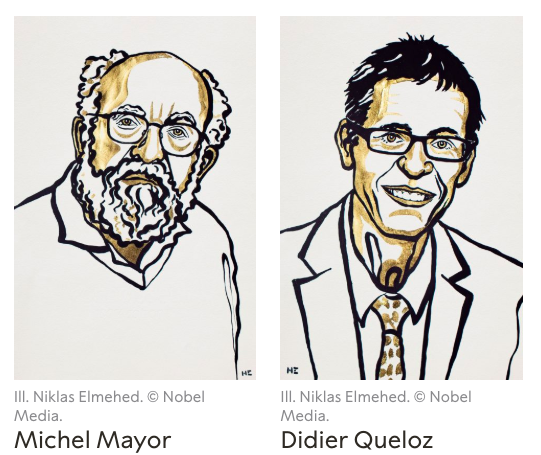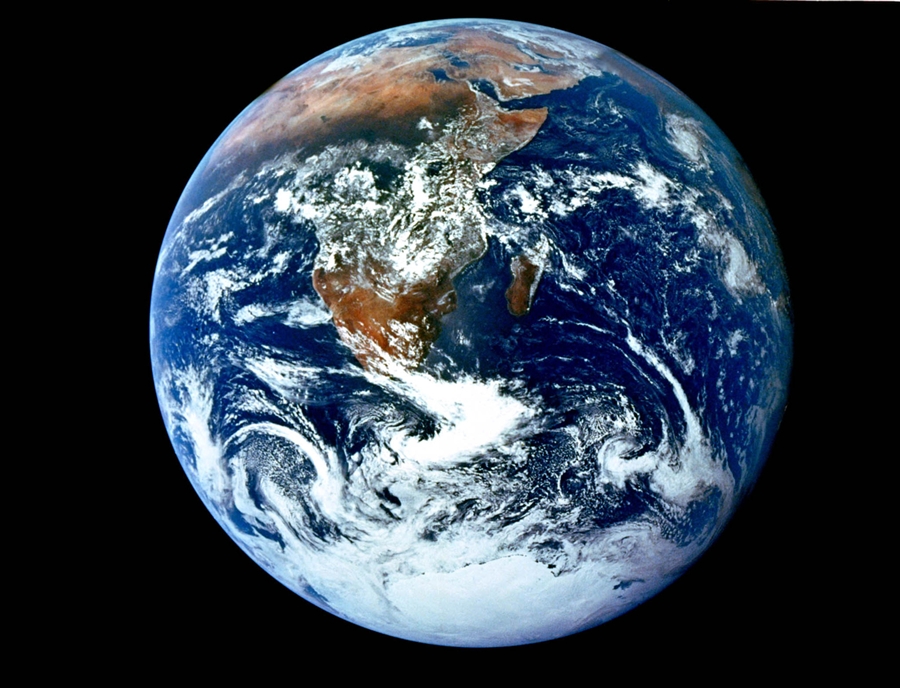By Qingyang Zhang, Y12
On the 8th of October, the Royal Swedish Academy of Sciences awarded the Nobel prize for physics to US scientist James Peebles, and to Swiss physicists Michel Mayor and Didier Queloz for their joint work. Mayor and Queloz, who are Professors at the University of Geneva (UNIGE), were awarded the Nobel prize “for the discovery of an exoplanet orbiting a solar-type star.”
Now you might wonder, what exactly does it mean? Moreover, why should we care?
In a nutshell, Mayor and Queloz of UNIGE were the first to discover an exoplanet – a planet outside of our solar system, which orbits a star that is similar to our sun (a main sequence star).
On the 6th of October 1995, Mayor and Queloz discovered the exoplanet 51 Pegasi b in southern France, which they named Dimidium. The orbital period, the time it takes for this exoplanet to go around its star, was detected to be merely 4.2 days. The short orbital period indicated that the exoplanet was orbiting very close to its star. In fact, Dimidium is closer to its star than Mercury is to our sun.
After closer inspection during the following years, the exoplanet was deemed a gaseous planet. This changed scientists’ view on planetary formation because previous models of planetary formation suggested that a gaseous planet cannot orbit too close to the sun. The discovery of Dimidium served as empirical evidence that it is possible to have gaseous planets orbiting a star, which called the validity of previous planetary models into question.
If the discovery was made in 1995, why is the Nobel Prize only just now being given out in 2019? The Nobel committee only awards Nobel prizes to scientific discoveries that have been empirically tested or those that have made an impact on scientists’ outlook and further research. Mayor and Queloz employed a new type of measurement technique: radial velocity measurement. They used a spectrograph to detect the periodic wobble of a star, which implied that there is an exoplanet orbiting around that star. Following their discovery, more than 4000 exoplanets have been discovered from 1995 to 2019, with the majority of exoplanets discovered using the radial velocity method.
So what’s the big deal? Discovering exoplanets allows humans to search for signs of life on other worlds and improve our current understanding of the origin of life. Furthermore, exoplanets also provide us with the hope that one day, we may be able to settle on one of these exoplanets as a new home for humanity.
Links for further reading:
Radial velocity spectroscopy: http://www.planetary.org/explore/space-topics/exoplanets/radial-velocity.html
Scientific Background on the Nobel Prize in Physics 2019 (Nobel committee; Page 15 – Page 24): https://www.nobelprize.org/uploads/2019/10/advanced-physicsprize2019-2.pdf
More on this year’s Nobel Prizes: https://www.nobelprize.org/prizes/about/prize-announcement-dates/



